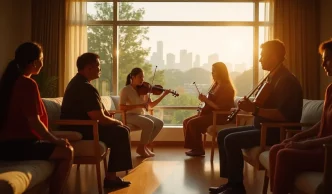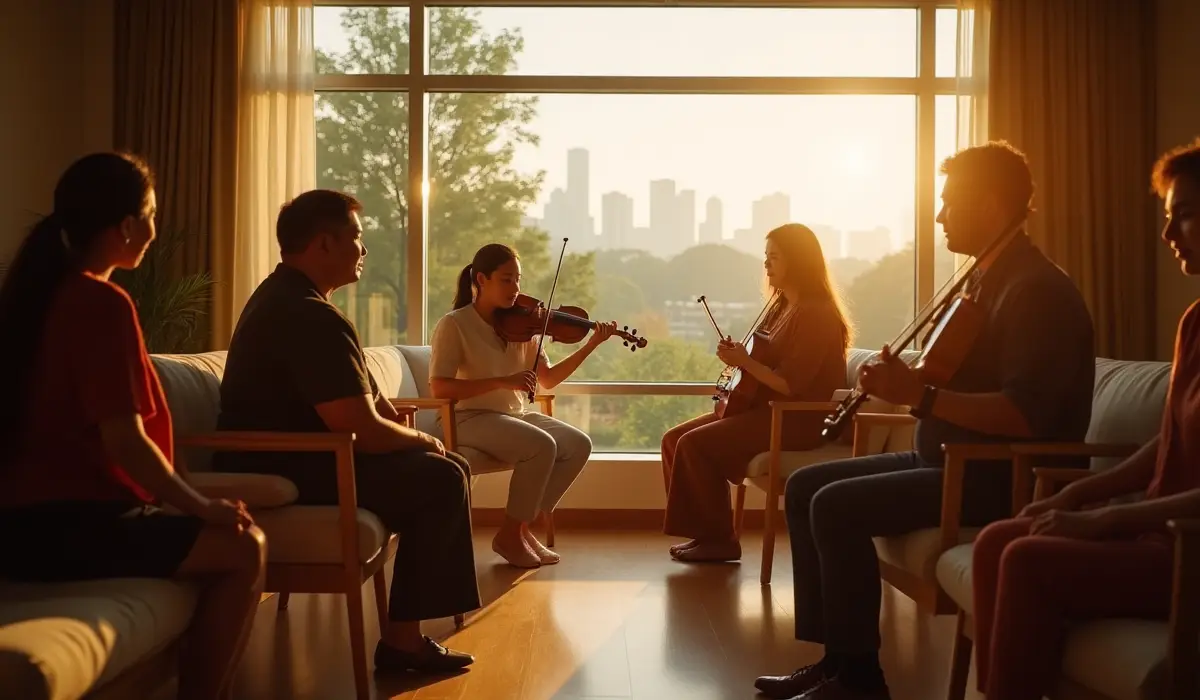In a quiet hospital ward at St Luke’s Hospital in Singapore, Mr. Bakti Khair is living out a dream that has taken over seven years to realize. For the 33-year-old, a former primary school music teacher, the sterile environment of a healthcare setting is his stage. Here, music becomes more than melody—it transforms into a tool for healing, bridging psychology and healthcare through the emerging field of music therapy. This year, Singapore took a historic step forward with the launch of its first postgraduate program in music therapy at Lasalle College of the Arts, a milestone that promises to reshape wellness and community care in the city-state.
A Growing Field with Deep Roots
Music therapy, a clinical and evidence-based profession, uses music to enhance physical, emotional, cognitive, and social well-being. Its applications span a wide range of needs, from palliative and dementia care to pain management and early childhood intervention. While the practice has existed in Singapore for decades—pioneered by members of the Association for Music Therapy in Singapore (AMTS) since 2007—it has often operated in the shadows of mainstream healthcare. AMTS, which started with just 11 professional members, now boasts 44, with a total of 74 including associates and students. Many work in hospitals, hospices, and nursing homes, with a growing presence in palliative care, where the focus on quality of life for terminal patients has amplified the role of creative arts therapies.
The launch of Lasalle’s two-year postgraduate course in 2024 marks a turning point. Dr. Indra Selvarajah, who leads the program, explained that it was born from rising interest in music’s therapeutic potential, evidenced by trends like the popularity of sound baths in Singapore. Unlike such wellness practices, however, music therapy demands rigorous, specialized training at a tertiary level. “We have 19 students, a good mix of local and international individuals from countries like Malaysia, Japan, and the Philippines” Dr. Selvarajah noted, highlighting the regional appetite for this field. The course, oversubscribed in its inaugural year, was meticulously designed over three years with input from international experts and in collaboration with AMTS.
Healing Through Harmony
For practitioners like Mr. Bakti, the program offers a chance to train locally, avoiding the prohibitive costs of overseas education. His journey began during an undergraduate assignment at Lasalle, where he discovered music therapy while studying music composition. “It’s all based on my desire to help” he told local media during an eight-week clinical placement at St Luke’s Hospital, where he worked with dementia patients. His passion reflects a broader cultural shift in Singapore, where music is increasingly seen as a conduit for emotional expression in a society often reserved about confronting difficult feelings.
At St Luke’s, senior music therapist Camellia Soon, 37, specializes in palliative and dementia care. Her work often centers on helping patients navigate grief—not just over death, but over the loss of identity and ability. She recalled a terminally ill elderly man with a neurological disorder, estranged from his family and prone to delusion. Over three months, spiritual hymns played during sessions evoked tears, though he struggled to identify the songs that moved him. Eventually, he shared vivid memories tied to specific tracks, including Andy Lau’s Fated and the Bee Gees’ First of May, before passing away a week later. “Music can unlock something I cannot do through just talking” Ms. Soon observed, underscoring the profound emotional access music provides.
Beyond the Elderly: A Spectrum of Care
Music therapy’s impact extends beyond elderly patients. At Thye Hua Kwan Moral Charities, therapist Farhana Rizaini, 34, works with children who have developmental needs. Through tailored musical activities—playing instruments, singing, and storytelling with music—she addresses individual challenges. One child, initially fearful of the guitar and sensitive to fast-paced sounds, gradually overcame these barriers with encouragement, eventually singing along to familiar tunes and playing instruments. Such progress illustrates music’s power to foster connection and growth across diverse populations.
Dr. Chan Kin Ming of Chan KM Geriatric and Medical Clinic emphasized the cognitive benefits for dementia patients. Learning instruments can enhance short-term memory and attention, while music offers a non-medication alternative to manage agitation. Yet, as Dr. Tan Xueli, AMTS president and principal music therapist at St Luke’s, cautioned, music’s potency cuts both ways. “Because music is powerful, you can also do harm” she warned, noting that certain songs tied to trauma can trigger distress. This duality underscores the need for specialized training to navigate patients’ emotional landscapes with care.
Cultural Nuances and Future Horizons
One of the program’s strengths is its focus on local context. As program lecturer Eta Lauw pointed out, while music is universal, its emotional and cultural resonance varies widely. Therapists trained abroad often adapt their skills to fit Singapore’s multicultural fabric—a challenge the Lasalle course addresses by embedding local perspectives. Mr. Bakti hopes to explore how elements like the collaborative nature of Malay music or the evocative five-tone Chinese scales can be integrated into therapy, tailoring sessions to resonate with patients’ cultural backgrounds.
The push for formal recognition of music therapy as part of Singapore’s allied health sector is gaining momentum. AMTS has published resources like a Code of Ethics and Professional Standards, laying the groundwork for integration into the healthcare system. Recognition could unlock patient subsidies, student funding, and broader access—a critical step as demand grows. Dr. Tan sees music therapy as an entryway for emotional expression, allowing Singaporeans to externalize complex feelings through song lyrics about loss or longing. “It makes it, in a way, more acceptable to talk about negative emotions” she reflected.
A Note of Promise
As Singapore’s first cohort of music therapy students progresses through their training, the field stands poised to expand its footprint in healthcare and beyond. From hospital wards to community centers, the strains of healing melodies are beginning to echo louder. For individuals like Mr. Bakti, and the patients whose lives they touch, this pioneering program is not just an academic achievement—it’s a harmonious promise of connection and care in a society ready to embrace music’s deeper potential.
















